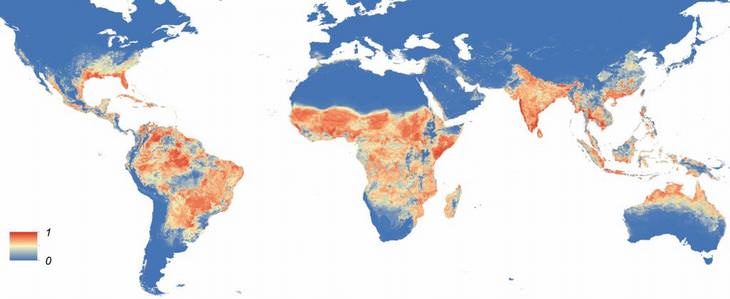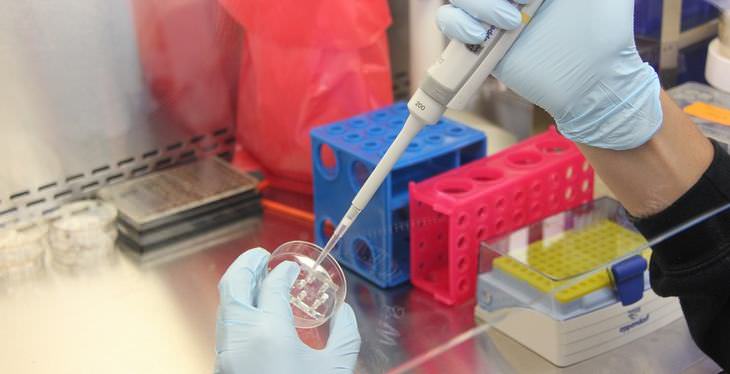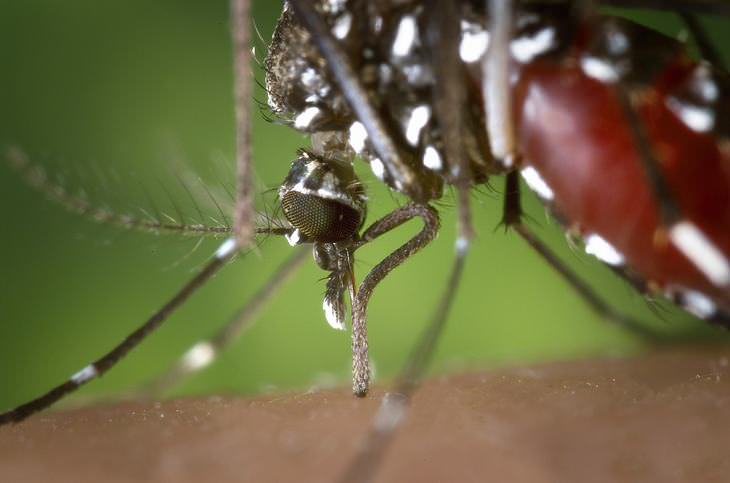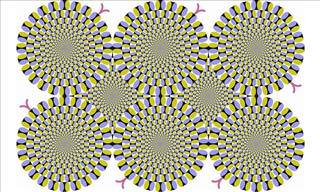

 Zika is particularly dangerous for pregnant women, as unborn infants are susceptible to massive birth defects as a result of infection
Zika is particularly dangerous for pregnant women, as unborn infants are susceptible to massive birth defects as a result of infection Zika is also transmitted through sexual contact
Zika is also transmitted through sexual contact Scientists have given us hope with their new discovery of IFITM3's resilience against Zika
Scientists have given us hope with their new discovery of IFITM3's resilience against Zika A Yellow Fever mosquito (Aedes Aegyptii): the most common carrier of the Zika Virus
A Yellow Fever mosquito (Aedes Aegyptii): the most common carrier of the Zika VirusH/T: secondnexus.com

INCREDIBLE: UK Researchers May Be Close to Beating HIV
HIV is a debilitating disease that affects 37 million people around the globe. The great news is that a cure may be just around the corner.
 14:07
14:07
Can A.I Catch What Doctors Miss? A Fascinating Talk
How close are we to that and can AI really do better than a human doctor? This fascinating TED Talk addresses these issues.

Medical Breakthrough: Can This Green Herb Prevent Cancer?
Moringa is getting scientists very excited, thanks to discoveries about the potential cancer-killing properties it possesses. Read on for this good news.

Could This Research Consign Kidney Stones To History?
Researchers have discovered that a compound found in fruit can be used effectively for preventing and treating kidney stones. Read on to find out more.

Science Breakthrough: An Immunization Against Skin Cancer?
This scientific breakthrough offers hope for those who are struggling with skin cancer. You are now invited to discover more about this revolutionary vaccine.

This New Treatment Looks Set to End Annoying Eye Floaters
Eye floaters aren't a problem for some people, but for others, they can get pretty annoying. Read on to find out about a new treatment to get rid of them.

The Apollo Program: A History of Manned Space Missions
Only 12 men have ever stepped foot on the moon. Find out more about their successful moon landings here!
 8:37
8:37
The Story of Skidboot: An Amazing Dog!
The story of Skidboot is a happy and sad one...

These Well-Known Places Have Their Hidden Secrets!
These well-known places have their hidden secrets. Read this article to reveal all!

These Amazing Illusions Are Enough to Make Your Head Spin
Optical illusions have the potential to highlight how the human mind plays tricks when it comes to perceiving things. Take a look at these 20 optical illusions.

A Few Beautiful and Flowery Thoughts on Positivity...
In life, you have to give yourself the space to allow your beautiful, positive thoughts to bloom like a beautiful flower. Watch this video to understand more.

Amazing! 7 Facts That Have Changed Since Your School Days!
Over time, facts we consider to be completely true can change. Here are 7 facts that have changed since your school days.

These 24 Fascinating Photographs Will Surprise & Amaze You
Here are 24 of the most amazing and surprising photographs ever seen on the internet!

Good News Alert! 11 Positive Things You Need to Know About
If you look for good news, you’ll always find it. Here are some wonderful things happening around us right now.
 8:08
8:08
Dancing With Dogs is So Much Better Than Regular Dancing...
These top contestants will wiggle, jump and roll their way into your hearts!
 8:35
8:35
Enter Buster Keaton: The Founding Father of Visual Comedy
Discover more about the founding father of visual cinema, Buster Keaton.
 8:23
8:23
Learning to Trust Again - Rehabilitating an Abused Dog
Ralph the abandoned dog learns to trust again...

Do You Remember Playing Like These Photographed Children?
In the days before cellphones, the internet, and the like, we children had to learn how to make our fun. Remember playing like these retro kids?

7 of History's Most Outrageous Con Artists
Fan of true crime? Today we will learn the stories of 7 of history's most notorious con artists.

These Unique Maps Tell a Great Deal...
These 19 maps of the world are anything but boring. Each map is compelling and teaches you something new about the world.

Do You Remember the Moments That Defined the 1960s?
The 1960s were a hugely important decade, setting the tone for the next 50 years that succeeded then. Here are 10 of the things that defined the decade.

Wish Someone a Lovely Day With This Great Song...
This uplifting song is going to make anyone's day, guaranteed!

How 10 Ordinary English Idioms and Phrases Began...
Many English phrases and idioms have fascinating histories behind them, here is a selection of 10 astounding examples.

10 Difficult Words in English Everyone Should Know
English has many difficult words with meanings that are nearly impossible to guess, which makes them super tough to remember. Here are 10 such words
 13:04
13:04
The Many Calendars of the Modern World - Fascinating!
This video reviews some of the most common calendars in the modern world.

These Fascinating Cat Facts Are Well Worth Sharing
You're definitely not a cat lover unless you know these 10 awesome facts about them!

10 Mysteries that have Shocked Human History
10 incredible mysteries we know very little about.
 9:14
9:14
Son of a Terrorist Speaks: Why I Choose Peace
The son of a famous terrorist, Zak Ebrahim's story is shocking and surprising.

Can You Guess the Meaning of These 20 Common Surnames?
We kind of take surnames for granted, as they are just passed down to us. But every name has an origin and meaning, and some might surprise you.

Unveiling the Great Achievements of the Han Dynasty
In this article, we’ll explore the great achievements of the Han Dynasty, examine how they shaped the future of China
 5:50
5:50
Watch This Couple Go Through 60 Years of Aging...
This young couple found out with some magical help from talented makeup artists. The results are remarkable, and the ending filled my eyes with tears.

Say Cheers & Raise Your Drinks to These 15 Terrific Toasts
I have been known to offer a few toasts myself when the occasion has grabbed me, but these are 15 of the very best toasts I have ever heard.

13 People Who Proved that Age is Nothing But a Number
If you think that celebrating your golden jubilee means you're past your prime, then these 13 people have something to teach you...
 9:16
9:16
The Most Notorious Man-Eating Lions in History
Do you know the strange history of the man-eating lions of Tsavo?

History: The Full Story of Napoleon's Epic Defeat
The full story of the battles Napoleon fought that eventually lead to his ultimate defeat.

I Wish They Taught Me These Math Tips at School
Bad at math? Learn how to use these quick and easy methods.

These 6 Mysterious Objects Can't Be Explained by Anyone
Archaeology is a very rewarding discipline, but there are some mysteries that never get solved. Take these 6 ancient objects. What they are is anyone's guess!

Watch These Old Historical Photos Come Magically to Life
Russian animator Alexey Zakharov has managed to achieve something amazing: he animates old photos and turns them into film. You've got to see this.

12 Freaky Photos of Olympians That Will Shock You
These surreal pictures of Olympians will make you see athletes in a different light.

Historic Photos From Days of Christmas' Past...
Christmas is said to be a time of love, cheer, and human compassion. These photos may be decades-old, but the stories they tell are not much different than the stories of today.

These Photos Prove How Strange of a Country South Korea Is
The following images illustrate how strange of a place Korea is.

You'd Best Think Twice Before Consuming These Delicacies!
Here are 10 dishes that can give you an adrenaline rush stronger than that from any roller-coaster, while testing your luck better than the lottery.
 9:19
9:19
See How the Egyptians Actually Built the Pyramids
While we marvel at the great pyramids, we know little about how they were actually constructed. This video sheds some light into that.

Rare Interesting Historical Photos That are Must-See
You won’t find these rare photos in your history books.
 5:54
5:54
She Will Never Forget Her Marriage Proposal. Ever.
This is a Marriage Proposal For the Books...

10 Cool Maps That Show How Much Unpopulated Space There Is
These maps will utterly surprise you when you realize just how unevenly the world's population is spread out. Most of the world is quite free of people!

We Bet You Never Knew the Origins of These Common Idioms!
We bet you use the following 8 common idioms all the time, but have you ever stopped to take the time to think about where they came from?


